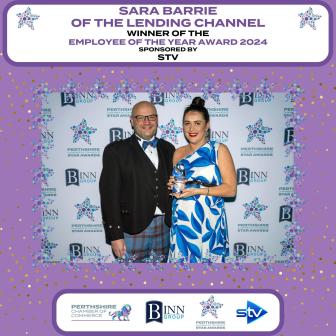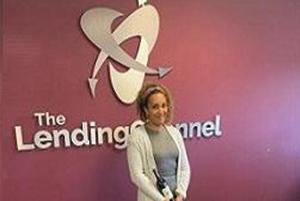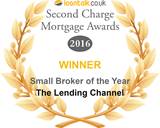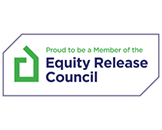Your Complete Guide to Buy-to-Let Mortgages: From Deposit to Return on Investment
Are you dreaming of becoming a savvy buy-to-let investor but feel overwhelmed by the financial maze that comes with it? You're not alone! Many aspiring property investors grapple with understanding the intricacies of buy-to-let mortgages.
Imagine you’re all eager to start a journey into the world of buy-to-let investing. You're excited about the prospect of building a property portfolio, but you're also apprehensive about the financial commitments and uncertainties that lie ahead (which is totally normal).
In this comprehensive guide, we've got your back. We'll walk you through every step, clarifying the complex terms and decoding the jargon. From understanding what a buy-to-let mortgage is to calculating your potential ROI, we've got all the answers you need. So, read on and let’s get to it!
Buy-to-let mortgages explained
A buy-to-let mortgage is your ticket to owning a property you plan to rent out.
It's a path that can lead to significant profits as an investor, provided you take the time to strategise, balance your income with expenses, and tap into the valuable insights offered by buy-to-let experts.
Remember that seeking tax advice is important before diving into this venture, and connecting with experienced buy-to-let landlords can also provide you with valuable perspectives and knowledge.
How buy-to-let mortgages work
Buy-to-let mortgages, in many ways, operate similarly to the mortgages you'd secure for a home of your own. However, there are some unique aspects to consider. Having a solid deposit or equity can significantly boost your chances of snagging favourable deals. Like with any mortgage, you'll have monthly repayments to manage, but here's the twist – buy-to-let lenders expect your rental income to foot the bill.
Now, here's the scoop on how buy-to-let mortgages differ: They're primarily interest-only, not the standard repayment model. This means your monthly payments chip away at the interest portion of your mortgage, leaving the original loan amount untouched. However, when your mortgage term ends, you'll need a plan in place to tackle that remaining loan balance. Whether you've got the funds to clear it upfront or opt to sell the property or take out a new mortgage, it's a choice that demands careful consideration.
Remember, the property market can be a rollercoaster, with values ebbing and flowing. There's a chance your outstanding debt might surpass the property's current value when you decide to sell or remortgage.
In this journey into the realm of buy-to-let mortgages, professional advice and staying attuned to the property market are your trusted companions. It's a path that offers opportunities and challenges, but with the right guidance, it can be a rewarding one.
You as a buy-to-let landlord
In the world of buy-to-let, there's no one-size-fits-all approach. You don't have to conform to anyone else's idea of what a "perfect" landlord looks like. Every landlord is unique, and your journey should reflect that. Some of us make property management a full-time gig, relying entirely on our rental income. Others might own a property or two while pursuing different careers, letting professionals handle the nitty-gritty.
Whether you're stepping into the role of an 'accidental landlord,' considering the switch from a residential mortgage to a buy-to-let mortgage, or crafting a strategic plan to grow your property portfolio, this guide is your companion.
Remember, this article is a helpful reference, but it's no substitute for personalised advice. We strongly recommend seeking professional guidance tailored to your specific situation before making property and mortgage decisions. Your unique path to success in property investment starts here.
Who's eligible for a buy-to-let mortgage?
If you're considering renting out your property, a buy-to-let mortgage is essential. However, lenders often view buy-to-let mortgages as riskier, so eligibility conditions can vary. Typically, these conditions encompass:
- Homeownership: Some lenders may require you to already own your home, whether you've paid it off or still have an outstanding mortgage.
- Good credit history: A solid credit record and not being overly extended with other debts, such as credit cards, is usually a prerequisite.
- Separate income: You might need to show evidence of separate income from employment or self-employment, typically around £25,000 or more per year. If your income falls below this threshold, some lenders may be reluctant to approve your buy-to-let mortgage.
- Age limits: Most lenders set a maximum age requirement, typically around 75 years. However, some lenders might have lower age limits.
- Loan-to-value ratio: There's typically a loan-to-value (LTV) limit of at least 75%, meaning you'll need a minimum 25% deposit for your buy-to-let mortgage.
- Rental income coverage: The amount you can borrow is determined by the monthly rental income you'll receive or are expected to receive. Usually, your rental income should be at least 125% of your mortgage repayments.
Keep in mind that these conditions can vary between lenders, so it's advisable to explore different options and seek professional advice from The Lending Channel to find the best buy-to-let mortgage for your specific situation.
Getting started: the deposit
Your journey into the world of buy-to-let begins with the essential first step – the deposit. It's a critical financial milestone, and understanding its nuances is key to building a solid foundation for your investment.
How much do you need?
The burning question on every aspiring landlord's mind is, "How much do I need for a deposit?" The answer can vary, but you can get an idea from our mortgage calculator. From the property's value to lending criteria, we'll help you determine the optimal deposit amount for your unique situation.
Where to secure it
Securing the required deposit might seem like a daunting task, but we'll explore various avenues to make it more achievable together. Whether it's through savings, equity, or alternative sources, we'll shed light on the options available to you.
Smart strategies
To make this significant step more manageable, we'll introduce you to smart strategies. From budgeting tips to leveraging government schemes, our guidance will empower you to navigate this critical phase with confidence.
The deposit is the cornerstone of your buy-to-let journey, and we're here to ensure that you build it on a solid footing, setting the stage for a successful and rewarding investment venture.
.png)
Evaluating potential ROI
Understanding your Return on Investment (ROI) is the compass guiding your buy-to-let venture. We'll be your navigators, assisting you in breaking down the calculations and factors that sway your potential ROI. Armed with this knowledge, you can confidently steer your investment towards prosperous horizons.
Managing and growing your BTL investment
Once you're part of the game, knowing how to steer and expand your buy-to-let investment is the next crucial chapter. We're your companions in this adventure, offering tips on effective property management, tenant selection, and the art of scaling your property portfolio. With our guidance, you'll have the tools to thrive and prosper in the world of buy-to-let.
How to choose the right buy-to-let property
Below, we've outlined some helpful tips to assist you in choosing the ideal buy-to-let property:
- Consult a local estate agent
Local estate agents possess valuable insights into suitable properties, and the local rental market, and can help you refine your search effectively.
- Establish your budget
Your budget plays a significant role in determining the available property options and their locations. Take the time to calculate your affordability and potential rental income realistically. This provides a clear reference point for researching property prices and rental rates in your target areas.
- Incorporate your mortgage costs
Integrate the expenses of your buy-to-let mortgage into your financial considerations. Many landlords opt for buy-to-let mortgages to finance their investments, necessitating budgeting for a deposit, which typically accounts for at least 25% of the property's purchase price. For in-depth information on different mortgage types, explore our comprehensive guide.
- Evaluate your financial preparedness
Ensure that you have the financial capacity to cover unforeseen costs. It's prudent to budget for periods when your property might remain unoccupied, such as during tenant transitions.
- Attract specific tenant profiles
Consider the kind of tenants you aim to appeal to. Families may seek proximity to schools, while young professionals might prioritise accessibility to transportation hubs. If your target is the student demographic, investing in properties near university campuses could be a strategic choice.
The beginner's guide to buy-to-let
Now that you’ve gathered all the essential knowledge to kickstart your journey as a buy-to-let landlord, why not reach out to The Lending Channel today to get started? Get in touch with us today to explore more in-depth guides on our website, gain further insights, and ensure you're thoroughly prepared before diving into this exciting journey.
Alternatively, if you feel like interacting with our experts, feel free to give us a call at 01738 583008 to discuss your needs and to get started on your path to successful buy-to-let property investment.




.jpg)

.png)
























